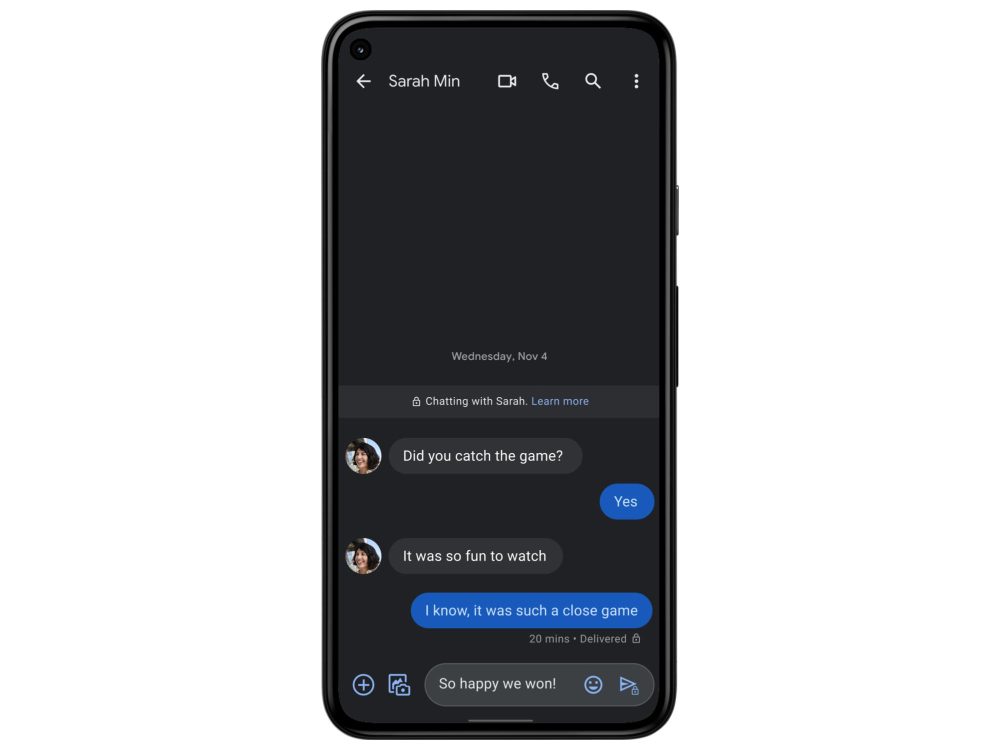
In mid-2019, Google decided to take over and speed up the launch of RCS. A little over 17 months later, Google announced today that it has completed a global rollout of RCS, while Messages will start testing end-to-end encryption.
RCS, or Rich Communication Services, allows for advanced messaging features like typing indicators, read receipts, higher-resolution photos and videos, larger group conversations, and interactive experiences with businesses.
Since carriers were taking quite some time to implement this big upgrade over SMS/MMS, Google last year stepped in by offering its cross-compatible RCS implementation directly to Messages users around the world. It started in the UK and France, with a major expansion to the US that November.
Google today has completed a global rollout of RCS for all Android phones. As such, those with carriers lacking support can download the Google Messages app from the Play Store. That said, availability “in some cases” depends on device and service providers. You’ll see an in-app prompt to enable or can visit Settings > Chat features.


To mark that occasion, Google is addressing one of the biggest criticisms about the standard its consumer messaging strategy is relying on. Google Messages will soon start testing end-to-end encryption in one-to-one conversations. With E2EE, the contents of a message cannot be read by Google or other third-parties during transit between the sender and receiver. Google is using the Signal Protocol.
We recognize that your conversations are private and it’s our responsibility to keep your personal information safe. We’re continually improving security protections to safeguard your privacy…
For this initial launch, both sides must be using the latest beta version of Messages and have Chat features over data or Wi-Fi enabled. When those conditions are met, end-to-end encryption is automatically active representing a privacy-conscious stance by Google. This reflects how privacy is a top need for users that the company surveyed. In fact, this default cannot be turned off and will get applied to existing eligible conversations, as well as new ones.
A lock icon that appears in the “Chatting with” banner, timestamps, and on the send button signifies that end-to-end encryption is active or was used for delivery. If E2EE is temporarily lost, the default behavior will be to hold the message until that secure connection is regained, though the option to send as an SMS is available.

E2EE is not available for SMS/MMS, while group messaging is not currently supported. That said, 1:1 conversations will work when using the Messages for web client as an encrypted connection already exists between desktops and phones for that cross-device feature.
End-to-end encryption in Messages will start rolling out this month in a process that will continue into next year. A technical paper is available here, along with a support page with more details.
Author: Abner Li
Source: 9TO5Google



